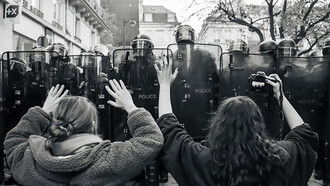When the economy contracts, consumer spending follows; luxury cars, designer apparel, and fine dining have a tendency to take dramatic plunges. It is not just luxury goods that bear the brunt, though; even regular activities like trips to the movies, theater, or restaurants become fewer and farther between for many people. Budgets are cut left and right. Oddly enough, there is one category that can boom during recessions: lipstick. It's called the lipstick effect, a hypothesis that says consumers shift from luxury treats to lower-cost indulgences like cosmetics when money is tight. It's not just lipstick, it's a reflection of how people cope economically and emotionally in challenging times.
Where did the lipstick effect start?
The term was created by Leonard Lauder, CEO of The Estée Lauder Companies at the time (subsequently chairman emeritus of The Estée Lauder Companies Inc.), after he noticed that lipstick sales generally increased during periods of economic recession. Most notably, following the 9/11 terrorist attacks in 2001, the company noticed a noticeable increase in cosmetics sales during widespread financial unease. Lauder theorized that rather than spending on big-ticket items, consumers (and particularly women) opted for smaller, pick-me-up purchases.
But the idea predates Lauder's observations. Sociologist Juliet Schor, writing in her book The Overspent American, had seen that consumers were willing to pay more for high-status brands like Chanel for public consumption, even while they cut back elsewhere. She spotted the social dimension of prestige consumption, that even in private, people seek markers of status and self-esteem, particularly when external circumstances appear to slip beyond control. Following Lauder's remarks, the media quickly took up the concept, terming the trend the "lipstick index" as an amusing if approachable economic indicator. Estée Lauder announced in late 2001 that lipstick sales were up 11%, and commentators even pointed to similar cosmetic booms during the Great Depression, when makeup sales supposedly increased up to 25%. This involved a broader behavioral pattern, when doubt strikes, affordable indulgences are psychological and emotional comfort.
The psychology behind it
Essentially, the lipstick effect is about emotional reassurance. When people are anxious or scared, they seek small ways to regain control or enhance their mood. Buying a $20 lipstick or new skin product appears a relatively inexpensive act of confidence and self-care, especially as compared to a $2,000 handbag or luxury vacation. It also connects to appearance-based coping. In competitive work environments, for instance, individuals may invest more in grooming and presentation in order to increase their attractiveness, professional or social.
Does data support this?
Although the theory is interesting and generally backed up by anecdotal evidence, economic evidence is a mixed bag. For example: in the 2008 financial crisis across the globe, lipstick sales rose for certain beauty companies but not for others; nail polish and skincare also rose more noticeably, especially as nail art trends caught on in English-speaking countries and markets like Japan and the Philippines. In fact, by the 2010s, nail polish was being referred to as the "new lipstick." Even Leonard Lauder noticed the shift, stating that makeup bags were already filled with lip colors after a difficult decade. Sales of nail items increased by 65% since the early 2008 period. Consumers, it seemed, were looking to nail polish rather than lipstick for small, affordable pick-me-ups.
Face masks during the COVID-19 pandemic upset the traditional lipstick industry almost entirely. Lipstick sales fell, while eye make-up and skin care products rose. The shift generated buzz about a "mascara index," as individuals sought noticeable cosmetic dividends for Zoom calls and masked socializing. Specialists believed the trend could have a lasting impact. These changing trends have led some economists and analysts to dismiss the lipstick index as an outdated or too simplistic model. Some even argue that makeup-buying habits are driven more by fashion and cultural cycles than macroeconomic pressures. More than just makeup
Finally, be it lipstick, nail polish, mascara, or a high-end face serum, these small indulgences are reflective of something far more significant: our quest for comfort, confidence, and control in the midst of uncertainty.
They are symbolic gestures, small indulgences that make people feel good without derailing their finances. And while the lipstick effect is hardly a precise economic indicator, it nevertheless says a lot about human nature. It reminds us that resilience is not just about retrenching or conserving, but also about finding small ways to stay hopeful, centered, and expressive in the midst of a world that appears unsteady. So if you find yourself gravitating towards a new lipstick during challenging times, don't judge yourself. Small joys can be a healthy way to cope. Just be careful not to over indulge in search of comfort because true comfort doesn't reside in accumulating stuff, but in understanding what makes us feel safe, seen, and empowered. A little beauty can boost your mood, but long-term strength is in knowing what truly nourishes you.















